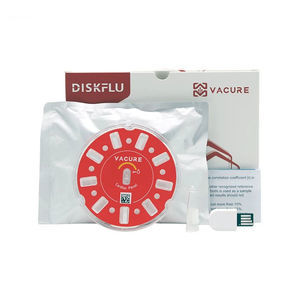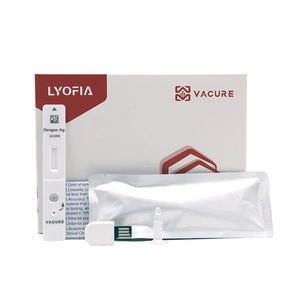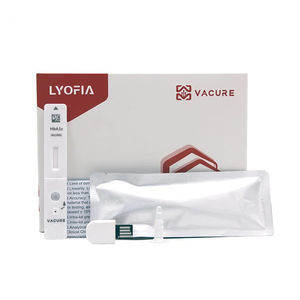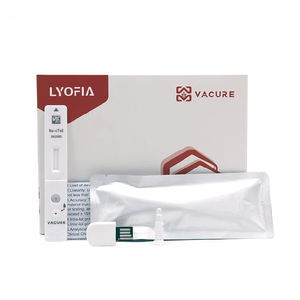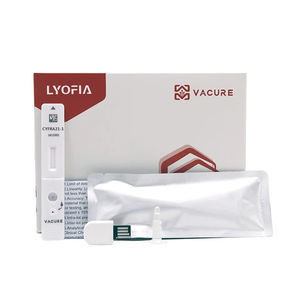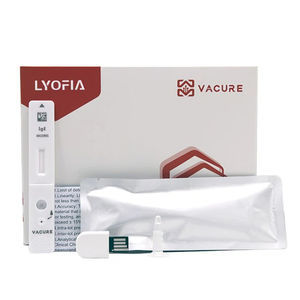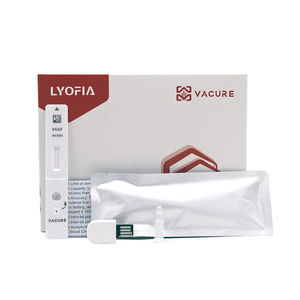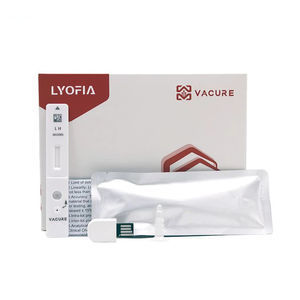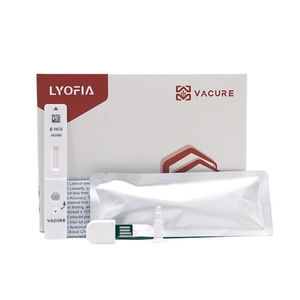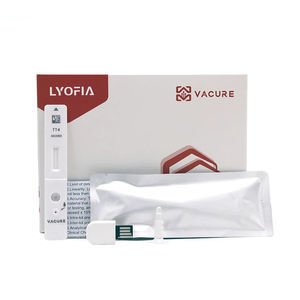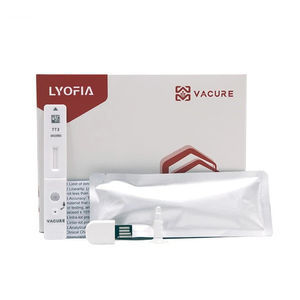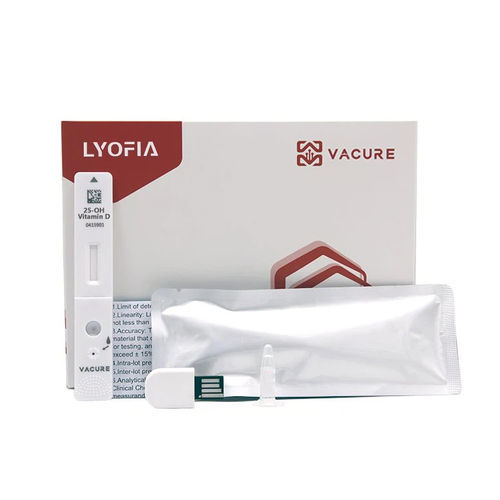
- Laboratory
- Laboratory medicine
- Kidney disease test kit
- Chengdu Vacure Biotechnology Co., Ltd

- Products
- Catalogs
- News & Trends
- Exhibitions
Kidney stone test kit LYOFIA®cholesterolvitamin D25-OH-Vit-D
Add to favorites
Compare this product
Characteristics
- Applications
- for kidney stones
- Tested parameter
- cholesterol, vitamin D, 25-OH-Vit-D
- Sample type
- blood, serum, plasma, whole blood
- Format
- cassette
- Other characteristics
- self-test
- Result display time
10 min
Description
This device is intended to be used for the in vitro quantitative determination of 25-hydroxy Vitamin D (25-OH Vitamin D) in human whole blood, serum or plasma. And it is for professional use only, not for self-testing of untrained individuals, nor for near-patient testing.
Summary
Vitamin D, a fat-soluble steroid derivative, is an essential fat-soluble vitamin that can be converted into vitamin D2 after exposure to ultraviolet light. Cholesterol ingested by the human body or synthesized in the body is converted into 7-dehydrocholesterol and stored under the skin, and can be converted into vitamin D3 after ultraviolet irradiation. Vitamin D mainly comes in two forms, vitamin D3 (cholecalciferol) and vitamin D2 (ergocalciferol). Its levels are affected by many factors, mainly including UV radiation, dietary supplements, age and obesity, race and ethnicity. Vitamin D itself is not biologically active and requires 2 hydroxylation to convert it into a biologically active form. The first hydroxylation occurs in the liver to produce 25-hydroxyvitamin D, and the second hydroxylation occurs mainly in the kidney to produce the biologically active metabolite 1,25-dihydroxyvitamin D. When 1,25-(OH)2D is in sufficient amount, it can be further converted into 24,25-(OH)2D in the kidney, and finally catabolism occurs. The half-life of circulating 25-hydroxyvitamin D is 2-3 weeks. Therefore, in medicine, the detection of 25-hydroxyvitamin D in the blood is often used to determine the content of vitamin D in the body, and the concentration of 25-hydroxyvitamin D in the blood is considered to be the best indicator of the body's vitamin D status.
Other Chengdu Vacure Biotechnology Co., Ltd products
POCT Test Reagents
Related Searches
- Assay kit
- Solution reagent kit
- Blood assay kit
- Molecular biology reagent kit
- Serum assay kit
- Immunoassay assay kit
- Plasma assay kit
- Infectious disease detection kit
- Blood rapid diagnostic test
- Protein reagent kit
- Diagnostic reagent kit
- Molecular test kit
- Cassette rapid diagnostic test
- Respiratory infection test kit
- Whole blood detection kit
- Serum rapid diagnostic test
- Plasma rapid diagnostic test
- Optical assay kit
- Clinical assay kit
- Cassette assay kit
*Prices are pre-tax. They exclude delivery charges and customs duties and do not include additional charges for installation or activation options. Prices are indicative only and may vary by country, with changes to the cost of raw materials and exchange rates.



